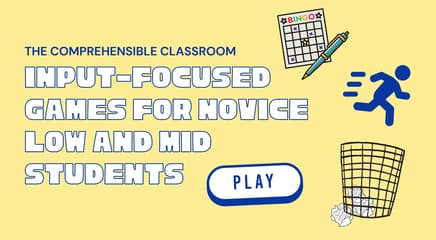Word Sort is a fantastic higher-order thinking activity that you can use to explore a text or topic. I first learned about Word Sort in the Teacher's Guide for El Nuevo Houdini; I believe that the brilliant Kristy Placido came up with it. It's used in one of the last three chapters, because we've not gotten there yet this year. Anyway, I loved it when we used it last spring, and I've been waiting for the opportunity to bust it out again!

Word Sort works best when you have a substantial text to work with--something that is chapter-length or longer. Short stories don't usually have enough words in them to extract the value in this activity. Here's how you do it:
Begin by pulling words from a text.
The words that you pull out of the text can be anything: names, places, adjectives, verbs, nouns...anything! Try to choose words that have some sort of significance to the text, as opposed to ambiguous words like "has" or "does" or "wants": when used on their own, these words are not specific enough. You could also use short phrases, like "has friends", "wants to leave", or "isn't happy". Use any word or concise combination of words that carries meaning in the text. See an example of the Word Sort that I created for Chapter 5 of Esperanza here.
Format the words in a table
Next, enter the words into a table on a word document--three or four words across and eight to ten words down. You can fit 24-40 words on a page, depending on how big you want the text to be. For the activity to work well, I recommend using at least 48 words (2 sheets of 24 words, if that is how you formatted it). More is great! You can see an example that I used in Chapter 5 of Esperanza.
Group your students
Divide your students into groups of two to three students (four if you must, but I always think four is pushing it, with middle schoolers anyway!), and give each group a copy of the word tables. If the text is one that you will use again in future years, I recommend creating a reusable set and pre-cutting the words so that you maximize time spent interacting with the language (words) and minimize the set-up (cutting) time.
Assign the sorting task
Explain to the students that they must split up the words into categories. They must create their own categories for the words, but they may not create categories like "words" or "other". They must fit every word into a category, and no category should have fewer than three words. (Try to include several words that don't fit in well with anything else to make the activity more challenging!) They could keep it simple and do "people", "places", "things", "adjectives", etc., or they could try to be a bit more creative: create one category for each person or event, and put everything that has to do with that person or event in that category. Depending on which text you use, students can come up with some pretty awesome categories!!
Discuss students' thinking
As they work, walk around the room and ask students to explain to you (in the target language) what their categories are and why the words in it fit into that category. You will find that they come up with some pretty far-fetched and creative explanations to fit certain words together!If a group finishes early, have them create new categories and re-organize the words.
My students love to do this with a text, and it is a great critical thinking activity. Try it, you'll like it!!




